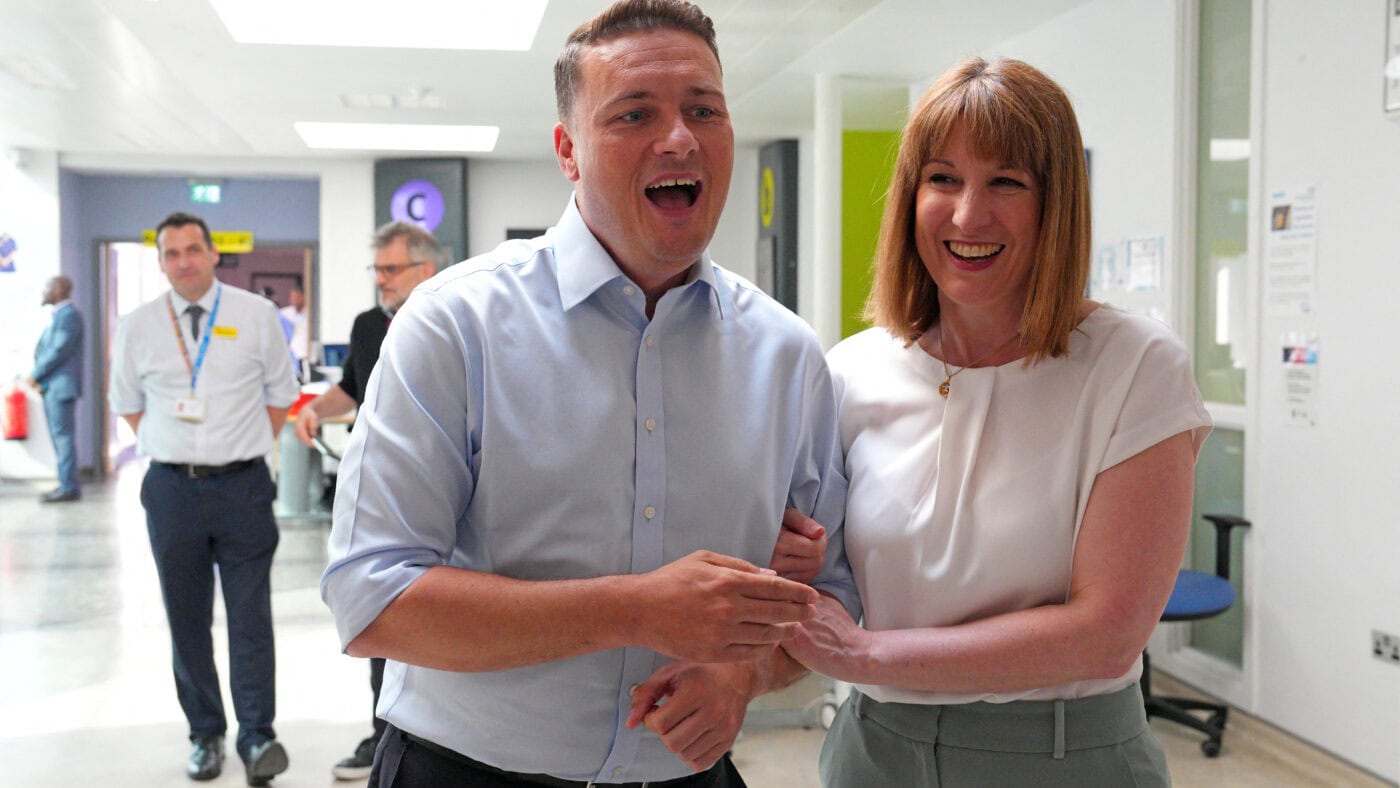Health and defence emerged as the ‘biggest winners’ at the recent spending review, bagging big funding increases, at the expense of other departments that now face a 0.3% annual real terms cut. This was a deliberate choice by the Government, which has now bet everything on being able to deliver improvements in the NHS before the next election. With the tax burden on track to reach a record high, the Chancellor has to make sure this increase counts.
Our new report on health productivity shows just how tricky this will be. UK health spending trails other developed countries in per capita terms but, as a share of GDP, it is one of the highest: 11.3% in 2022 compared to an average of 9.2%, even before Labour’s many spending pledges.
This, of course, is a much more accurate measure of affordability. Further increases in health spending are primarily constrained by economic performance, meaning improvements have to come from productivity growth. This means making every pound go further than ever before.
What is productivity?
Productivity is the relationship between the growth of inputs and outputs. In the context of healthcare, inputs include things like the number of doctors, while outputs include things like the number of appointments. Productivity growth occurs when outputs grow faster than inputs, for example, if doctors see more patients per day. Crucially, this is different from simply adding more doctors. If the number of patients each doctor sees per day remains the same, productivity does not increase as inputs and outputs are rising at the same rate.
The productivity track record
In fact, productivity can fall if outputs grow less quickly than inputs. This is what has been happening in the wider public sector where productivity has been consistently declining since the turn of the century. Healthcare, fortunately, has been an exception, with productivity growing consistently – even at times outpacing the wider economy. Yet it took a big hit during the Covid pandemic from which it has yet to recover.
Even before the pandemic, there were warning signs. Productivity had already started to decline in 2017-18. Under the previous Conservative government, average productivity growth was just 0.28%, a far cry from the 1.8% under the coalition. Interestingly, productivity growth was higher under the coalition government than under the last Labour government, where it averaged 0.68%, suggesting that what drives improvements in NHS productivity may actually be spending restraint.
Where things go wrong
To get productivity back on track, we must understand where the health system is doing well and where there is room for improvement. Our report compares the UK against 26 OECD countries, looking at how spending translates into resources, how resources translate into activity and how activity ultimately affects outcomes.
Our findings were eye-opening. We found that the UK performs well in terms of the amount of activity it produces relative to the amount of resources in the health system, suggesting that the reports we hear each year about the NHS being overstretched are true. However, it has far too few resources to show for the amount of money being spent. Two particular areas of spending stood out, namely staffing and capital, with inefficiencies in both stemming from deeper structural problems.
The pay paradox
Take staffing for example. The UK had higher than average spending per doctor and nurse than other English speaking countries like Australia, Ireland and New Zealand. Staffing also eats up a much bigger slice of the health budget than in other publicly run health systems, 64% compared to 42% in New Zealand and 33% in Ireland. Rather puzzlingly, this is despite wages for health workers being lower than average.
Part of the reason for this is that pensions are not being included in the pay data. Pension contributions made up a significant proportion of remuneration, with NHS employer contributions currently at 23.7%. An absurdly generous offer unheard of in the private sector.
Spending on pensions alone made up 7.9% of NHS operating expenditure, double what it is in Ireland and six times New Zealand. Yet this doesn’t seem generous to workers who face a 9.8% marginal employee contribution rate just to access it, contributing to difficulty in recruitment. The system costs a fortune, but staff feel underpaid anyway, the worst of both worlds.
How investment has lagged behind
It’s a similar story with capital investment, where the UK ranks below average and behind comparable countries. As a share of GDP, capital investment was three times less than Germany and half of countries like Australia and the United States. Unsurprisingly, the UK had fewer diagnostic machines and hospital beds as well.
Why is this the case? Because every time money is tight, the capital budget is raided to pay for day-to-day expenditure. Time after time, the NHS has chosen to bail out hospital deficits and recruit more staff instead of spending more on capital projects. This has led to an inefficient mix of inputs that constrains output growth. Without the right tools and facilities, doctors and nurses can’t work efficiently, no matter how many more we hire.
It’s a vicious cycle: low investment drags down productivity, which means you need more staff, leaving even less money for investment. Just look at the most recent spending review, where NHS day-to day-spending grows by 3% per year, compared to 0% for capital.
Politically motivated decision making
A common thread running through all this has been politically motivated decisions. Necessary reform of NHS pay will inevitably face resistance from unions, so politicians take the path of least resistance and try to paper over the cracks with yet more pay rises which only makes the problem worse. If history is anything to go by, Labour will cave to yet another round of above inflation pay demands this year. Likewise, rebalancing spending away from day-to-day expenditure and towards investment will only pay off years down the line, and be hugely unpopular in the interim.
So politicians prioritise the former over the latter. With this sort of thinking motivating decision making, it’s no wonder productivity has failed to recover.
Ultimately, these problems stem from the fact that the healthcare system in the UK is publicly run, meaning politicians exert control over many aspects of decision making. Indeed, we observed that investment was noticeably lower in countries with heavily regulated health systems. In contrast, Germany, which relies heavily on market mechanisms, had the highest level of capital expenditure on health as a percentage of GDP.
Accountability matters, but it has to work
Political accountability is not a bad thing. The decade-long experiment of trying to outsource decision making to a quango, NHS England, recently ended in failure with millions wasted in duplication and politicians interfering anyway. However, the system only works if politicians are willing to take difficult decisions, rather than bowing to political pressure at every turn.
Fixing this means serious reform, including decentralising pay setting, overhauling the capital spending regime and learning from countries like Ireland and New Zealand, where publicly run health systems coexist with more expansive voluntary and compulsory insurance, thus putting spending outside of political reach. Simply continuing to spend more without thinking about where and how money is spent is not the answer.
Click here to subscribe to our daily briefing – the best pieces from CapX and across the web.
CapX depends on the generosity of its readers. If you value what we do, please consider making a donation.


